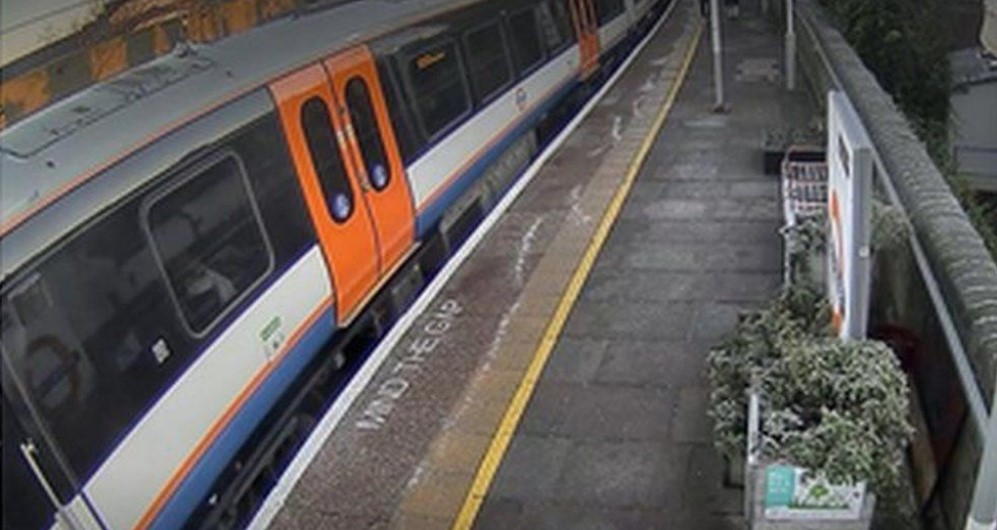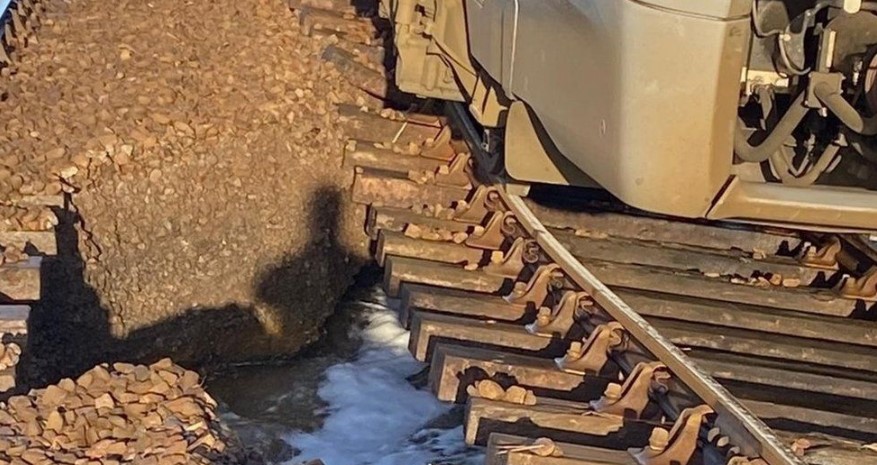One of the factors that leads to accidents and incidents is the behaviour of those who travel or work on the rails. Often, this is a result of individuals not following rules and/or procedures but it is sometimes a reflection of failures and miscalculations on the part of management or supervisors. Errors of judgement are a fact of life, and some accidents are unavoidable, but passengers, workers, and those in charge can take steps to minimise the risks.
Hand trapped in train door
On 14 January at Wood Street Station in North East London, a passenger attempted to board a train but became trapped when their hand was caught in the closing rear doors of the fourth car. The train was the 08:22 departure. As the train moved off, the passenger was forced to run alongside it for approximately 20 metres until the train stopped. The doors were then released, and the passenger’s hand was freed without injury.
Following a preliminary examination and an assessment of the gathered evidence, the Rail Accident Investigation Branch (RAIB) has decided to publish a Safety Digest. Arriva Rail London, which operates the London Overground on TfL’s behalf, is undertaking a full investigation and working with the RAIB.

London Gateway derailment
RAIB is also investigating freight train derailment that occurred at 05:45 on 24 December. The 22:35 GB Railfreight service from Hams Hall (near Birmingham) to London Gateway derailed on the Down Thames Haven line on the approach to London Gateway Port, near Stanford-le-Hope in Essex.
The freight train involved was formed of a class 66 locomotive and 33 wagons, all of which were of the ‘container flat’ type. The initial derailment occurred on Network Rail managed infrastructure, when the leading bogie of the 12th wagon derailed on plain line at about 13mph. The train continued travelling for around 500 metres after this initial derailment, before it reached a set of facing points within the port boundary, when a further four wagons derailed.
The first to derail was the middle wagon of an Ecofret2 set of three which were semi-permanently interconnected by steel draw bars. The wagon that derailed was the only wagon not loaded with a container. There were no injuries, but extensive damage to track and signalling within the port boundary resulted. Temporary repairs were made so that the port could re-open on 4 January. An RAIB investigation is underway looking at wagon characteristics and loading, track condition and the way in which the train was driven.

A frightening headline
The RAIB website recently reported a “Near miss with two trackworkers and collision with a tree on the line” at Uphill Junction near Weston-super-Mare, Somerset. This occurred at around 13:10 on 14 January. The train was travelling at 95mph when it struck part of a four-metre tall, 165mm tree at the junction. The workers were part of a team working on vegetation on the embankment adjacent to two running lines that were both open to traffic. After felling, the tree came down the embankment and landed in the cess.
The workers went onto the open line and tried to remove the tree. They became aware of the approaching train and moved two metres clear “several seconds before the train passed”. The train hit branches of the tree and scattered debris. Their attempt to move the fallen tree was unsuccessful and moved it to a position where it was foul of the running line. The bulletin comments that this was “one of several recent safety incidents involving de-vegetation works beside the track each of which could have been much more serious”. RAIB has decided to publish a Safety Digest which will hopefully examine how the work was planned.
Acetylene or propane?
Network Rail’s Safety Central website and its Safety Bulletins are usually concise and to the point. One issued on 20 December refers to a technical issue but is arguably indicative of less than complete communication between local workers and a contractor’s choice of gas.
Capital Delivery Contractors went into Sevenoaks Tunnel to cut out some metalwork from a ventilation shaft using propane but were told by the maintenance welding team that they could not use propane inside the tunnel. Consequently, they removed their oxy-propane equipment. However, the contractor had assessed the risk and identified the problem of using acetylene which is lighter than air so proposed propane as a safer alternative.
Network Rail’s standard for ground level welding recognises the use of acetylene because propane could gather at low level and create fire or explosion risk. The Safety Bulletin says that a review of Network Rail’s standards is now underway and its listed discussion points comprehensively address risks and method statement issues. There is no reference to the management failure to keep their own welding people aware of contractors working in their geographical area.
Track formation washed away
At around 07:45 on the morning of 30 January, the 07:25 Greater Anglia Norwich-to-Lowestoft train ran into a section of track where ballast and the formation had been washed away by flooding water from the Haddiscoe New Cut Waterway. This Waterway is northeast of the railway and crosses it, discharging into the Haddiscoe Marshes. Approaching the area, the train driver saw standing water on the tracks ahead and braked. The train consisted of three coaches and a power car which came to a halt with its front carriage above the flowing water.
During the next 20 minutes the water caused the track to sink, and the first carriage tilted both forwards and sideways. The driver attempted to reverse back from the undermined track, but this failed due to the angle of the first carriage. Consequently, the five passengers, driver and guard evacuated onto the track and were then taken back to Reedham Station by a rescue train. No-one was hurt and the train was recovered undamaged, but the line remained closed for a week while repairs were made.
A “significant tidal surge” affected drainage from the Broadland rivers and raised the level of the New Cut. The Environment Agency’s flood warning had not predicted a flood level higher than the flood defences. RAIB’s investigation is underway.

Train driver fatality near West Worthing
On 1 February a train driver was struck by a passing train and fatally injured near West Worthing. The train had been driven from Brighton before entering the siding where it was timetabled to wait before returning to West Worthing Station. It would then form the next passenger service back to Brighton.
At about 20:33, a second train travelling at around 33mph passed the stationary train in the siding some 300 metres west of West Worthing Station. It struck and fatally injured the stationary train’s driver who had left the train cab and descended to track level. The news story from the RAIB, whose investigation is underway, says “train drivers should not normally need to leave their trains as part of their duties while waiting in this siding”.
Near miss with LOWS operated warning system
At 10:08 on 28 February, a train driver reported a near miss with track workers at Sharnbrook East Midlands who were regulating ballast protected by a Lookout operated warning system (LOWS). Details can be found on Network Rail’s Safety Central website. The LOWS Controller “received a warning which he cancelled in error” for the Up line.
Immediately afterwards he received another warning which he wrongly assumed was a reinstatement of the earlier one.
A train on the down Line then passed the team who were in a position of safety. The up line train, for which the LOWS warning had been wrongly cancelled then came round the curve. The controller shouted for the team to stand clear, and they moved to both sides of the track. The driver saw them move clear and reported the incident to the signaller.
Stopping the use of lookouts was overdue when it eventually happened but should we still be using LOWS in the twenty-first century?
Image credit: RSSB

